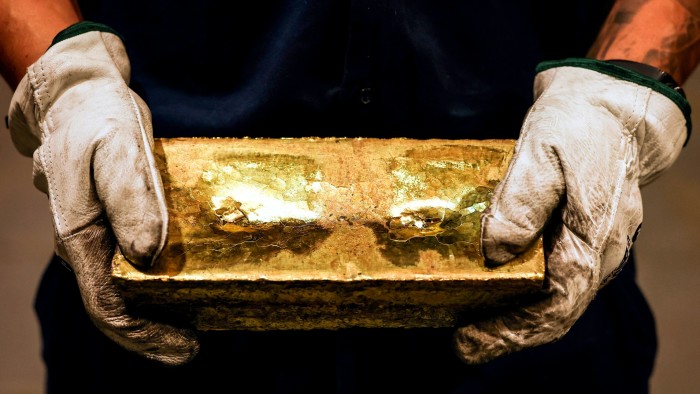Stay informed with free updates
Simply sign up to the Central banks myFT Digest — delivered directly to your inbox.
Central banks expect to keep buying more gold this year, and anticipate their holdings of US dollars will fall over the next five years, according to a survey of global monetary authorities.
Geopolitical concerns, sanctions risk, and worries about the status of the US dollar have driven global central banks to make record purchases of bullion. Gold recently overtook the euro to become the world’s second-largest reserve asset, behind the US dollar.
Gold prices have surged 30 per cent since January and doubled in the past two years, as global uncertainty and market volatility have propelled investor demand for bullion.
A record 95 per cent of respondents to a World Gold Council survey expect global central banks’ gold holdings to increase over the next 12 months, the highest level since the annual poll started in 2018.
Meanwhile three-quarters of respondents expect central banks’ US dollar holdings to decline over the next five years. More than 70 central banks responded to the industry body’s survey.
Shaokai Fan of the WGC said: “The sentiment is very strong, certainly there’s more confidence among central banks that the entire universe of central banks is going to buy, and that their own central bank might buy.”
However in a sign of how geopolitical tensions are impacting the gold world, some central banks plan to store more bullion domestically — as opposed to in London and New York, which are the world’s two largest such repositories.
Concerns about central banks’ ability to access gold stored overseas in the event of a crisis, or in case of sanctions, have contributed to a small but not insignificant trend of repatriation, with more storing gold domestically.
Last year India repatriated more than 100 tonnes of gold from the Bank of England, while the Central Bank of Nigeria also repatriated some of its holdings.
About seven per cent of respondents said they were planning to increase domestic storage, the highest level since the Covid-19 pandemic.
In recent months, the US government’s erratic comments have contributed to unease among some foreign countries about whether their gold stored in the US is safe from political interference.
The Federal Reserve Bank of New York handles the gold stored in the US on behalf of foreign central banks.
In February, US President Donald Trump publicly queried whether gold could have gone missing from Fort Knox, which holds most of the US’s own gold reserves.
In the WGC survey, the central banks said gold’s performance during “times of crisis”, its lack of default risk, and its role as an inflation hedge were the top reasons for holding bullion.
Central banks’ gold buying accelerated in 2022, after the Russian invasion of Ukraine, and subsequent US efforts to freeze Moscow out of the international payments system. That prompted many emerging market central banks to start diversifying faster away from the US dollar.
“Recent market developments around tariffs have raised questions on the safe-haven status of US dollars but have bolstered that of gold,” said one anonymous survey respondent. “Reserve managers view gold as an . . . inflation hedge in this challenging time marked by geopolitical and trade conflicts.”
Gold also has downsides as a reserve asset, including the storage costs and the inconvenience of transporting it.
https://www.ft.com/content/cfe1ccc6-5c9e-45bd-9dd3-d6d85e8514c2


